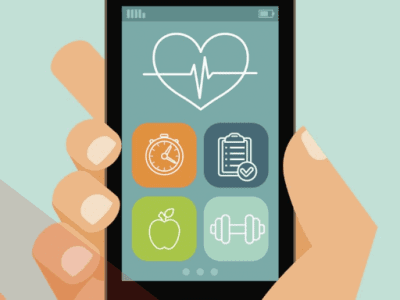Mobile Healthcare at the Tipping Point
Share This Post
Using their smartphone apps, expecting and new mothers receive timely advice and tips in English. A diabetes patient communicates remotely with his doctor by sending his glucose reading over the GSM network using his smartphone app. A health-conscious person uses a smartphone app to coach him through various fitness levels in a custom program.
There are many more such applications that are designed to work specifically with smartphones. The effect of such applications is that they have given the patient or the ‘health-conscious consumer’ the power to make his / her own healthcare choices and decisions, anytime, anyplace.
Mobile Healthcare, or mHealth is a term used to define medical and public health practice supported by mobile connected devices, such as mobile phones and patient monitoring devices. For a communication to be classified as mHealth, the data must be shared, stored, accessed, modified and delivered via a mobile services network or through the internet.
 As a result of these technological innovations, mHealth is at the tipping point. So, who will benefit from mHealth?
As a result of these technological innovations, mHealth is at the tipping point. So, who will benefit from mHealth?
Thanks to the explosion of mobile phone users in developing economies, mHealth will help overcome geographic barriers and the ‘last mile’ for reaching out to remote patients. In developed economies, mHealth is positioned as a cost-effective, preventive care in place of expensive health care.
This leads to the next question. There has been a lot of buzz, and many projections of a booming market for mHealth solutions in the short- to long-term. Which industry stands to gain out of the emerging mHealth market?
There is an early indicator of trends to come. Some of the big telecoms brands are engaging, and in some instances, already in a partnership with niche healthcare companies to grab a piece of the mHealth solutions market.
The mHealth ecosystem would involve many more such partnerships as mHealth communications would involve hardware, software and a communications infrastructure to work together for delivering value to the consumer. Besides medical device manufacturers and mobile telecom service operators, mobile handset makers, software providers, chip makers, content and application providers, healthcare providers, cellular network carriers have a good chance to latch on to this opportunity.
 Some of the important considerations that are necessary to be successful in the mHealth markets of the future include:
Some of the important considerations that are necessary to be successful in the mHealth markets of the future include:
Consumer-centric approach
The success of mHealth devices and solutions depends on their ease-of-use, intuitiveness and engagement with the consumer. Rather than stand-alone devices, interoperable devices that help consumers to track their health on multiple platforms stand to gain. Lastly, consumer-friendly ergonomics is a key for market success.
In developing economies, the market positioning and stakeholder communication regarding such mHealth devices and solutions would be critical to market success. The markets in developing economies for such products is still niche, but mature enough to give first-mover advantage to mHealth firms that carefully target specific requirements of a particular geography.
Actionable Insights
mHealth devices and solutions create a large stream of data for consumers and clinicians to act. The key to establishing a successful brand and sustained growth involves generating specific actionable insights by continuously monitoring patient data and healthcare attributes of consumers. Further, mHealth goes beyond simple data monitoring; the involvement of a human interface, expert data analysis and recommendations for follow up actions based on insights generated are equally important. This symbiotic ecosystem of devices, services and expert advice is critical for mHealth to generate the intended benefits.
The growth and development of the mHealth industry depends on deployment of global standards and regulations. This will require initiation of a critical dialogue between all stakeholders – healthcare regulators, health experts, doctors, consumers and technology vendors, and closer integration of technologies and applications with legacy systems.
India represents a very large mHealth opportunity, and is a fertile testing ground for many new innovative mHealth start-ups. With the Government betting big on mHealth for deployment in Primary Health Centers (PHCs) to close the ‘last mile’ gap, there has never been a better case for entering the India market than now. A successful program of product testing, validation and market acceptance in India would provide a mHealth start-up an excellent base to use its India experience as a gateway to target the larger Asia-Pacific and Africa markets.
Excerpted from a new CyberMedia Research study on the India mHealth Solutions market, to be released shortly.Touch is becoming a key embedded feature of almost every electronic device that is available in the market. From the era of single touch, the market is now evolving towards multi-touch. When compared with single touch technology, multi-touch technology devices are able to  accept multiple inputs at the same time via a touchscreen. Though, touch technology has existed in the market since the 1980s, it gained significant momentum after the launch of the Apple iPhone. Today, touch is a major human interface for products such as computers and mobile phones.
accept multiple inputs at the same time via a touchscreen. Though, touch technology has existed in the market since the 1980s, it gained significant momentum after the launch of the Apple iPhone. Today, touch is a major human interface for products such as computers and mobile phones. Types of Touch Technologies
Types of Touch Technologies
- Resistive touch technology
- Capacitive touch technology
- Dispersive signal touch technology
- Acoustic touch technology
- Infrared touch technology
- Optical touch technology
Resistive and capacitive technology based touch screens are the most widely used and are deployed in a wide range of applications such as entertainment, gaming, hospitality, retail etc.
Multi-touch Technology
Multi-touch technology based touch screens provide an intuitive human-computer interface that has the ability to eliminate conventional input devices such as keyboards, mice etc. This superior technology now allows multi-user experience, which was previously not possible. By using multi-touch one can easily paint, sketch and zoom on display screens.
Just as in the case of single touch screens, a similar trend is being noticed in multi-touch screens as well where resistive and capacitive technology multi-touch screens are most commonly used. Though resistive technology multi-touch screens account for a major share of the market, capacitive technology screens are expected to drive future market growth. The biggest advantage associated with capacitive technology multi-touch screens is that they do not require pressure to activate when compared with resistive technology multi-touch screens. Capacitive multi-touch screens are now being deployed in high-end devices such as tablets and smartphones.
 When we plotted the two multi-touch screen technologies on a standard product lifecycle ‘S’ curve, we found that resistive multi-touch technology is more mature as compared to capacitive multi-touch technology. Low cost and ease of implementation are the key benefits provided by resistive touch screens, but these are often affected by the wear and tear caused by the application of pressure over a period of time.
When we plotted the two multi-touch screen technologies on a standard product lifecycle ‘S’ curve, we found that resistive multi-touch technology is more mature as compared to capacitive multi-touch technology. Low cost and ease of implementation are the key benefits provided by resistive touch screens, but these are often affected by the wear and tear caused by the application of pressure over a period of time.
Tablet PCs that uses capacitive multi-touch technology screens are expected to significantly impact the multi-touch market. For instance, within the first week of their launch, Apple sold 1 million and 3 million units of iPad2 and iPad3, respectively. These developments are expected to spur the touch and multi-touch market to new highs.
Future Outlook
As per industry estimates the global multi-touch screen market is expected to grow at a CAGR of around 19% for the period 2011-2016.
The ability to offer a true-to-life user experience by accepting multiple inputs at the same time via a simple ‘gesture’ as against a physical touch will see multi-touch screens being deployed in greater numbers. For instance, Micromax recently unveiled their latest smartphone A85 Superfone that supports multi-tasking along with high quality console gaming that was not possible earlier on single touch screens.
In a related development with significant implications for the electronics, computer hardware and mobile device industry, Qualcomm recently acquired certain assets of GestureTek, a company that has been developing gesture recognition technology for about 25 years. These intellectual property (IP) assets will be integrated into Qualcomm’s Snapdragon processors. So, smartphone and tablet manufacturers will be able to launch devices featuring gesture control interface.
Gesture control has recently evolved into television sets too with some screens that recognize gesture control already available in the market, such as those from Hitachi and Toshiba. On the PC front, Microsoft has recently added touch capabilities to the Windows 8 operating system. And now coming to smaller devices, this technology is likely to see adoption on a mass scale at a level where gestures are generally employed in natural human settings.
Apart from being a trendy, new interface for users to interact with their devices, we can definitely expect to see new applications coming up. One of the areas that we feel will be an early adopter is of emotions. We first used simple text messages for expressing emotions, and then added emoticons, a picture, a sound clip or a movie clip, and now this is expected to graduate to gestures.
Attempting a contactless interface option is not a new concept. We have many voice enabled (‘open sesame!’) type controls for devices, which often do not operate smoothly because of accent, ambient noise, disturbances etc. Gesture control technology definitely does not face such an issue. So far it is running successfully for television sets and the same results should be visible in smaller devices.
With Qualcomm setting the trend, gesture control is expected to be the next ‘hit’ human-machine interface after touch technology. Interesting to watch would be Apple’s response to this development, as this a very apt technology to adopt for the vendor and extend their gadget chain starting from iPods, iPhones and iPads to television screens (perhaps to be re-christened as the ‘iWall’!)













